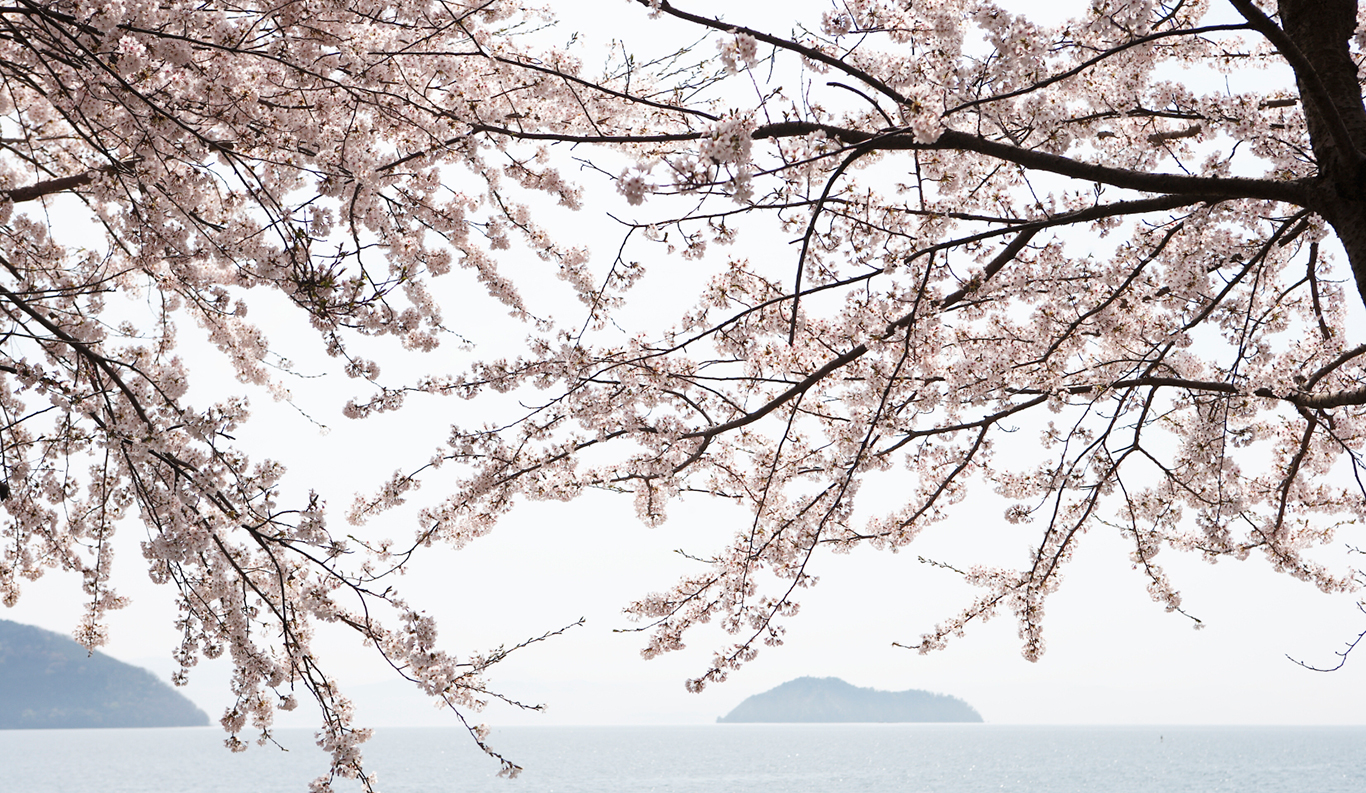Nature and history by beautiful Lake Biwa
Nagahama, SHIGA
4 Days 3 Nights
Nagahama, SHIGA
4 Days 3 Nights
- Day 1
- Travel to Lake Biwa
Board a local JR Kosai Line train to Nagahara station from Kyoto, 1 hour and 10 minutes. Upon arrival, you will be met by a driver and transfer to L’Hotel du Lac.
*This pick-up service should be booked in advance.
From Komatsu Airport: Travel to Komatsu station by bus for 15 minutes. Board a limited train Thunderbird/Shirasagi to Tsuruga station, then change to a local JR Hokuriku line train to Omishiotsu station, a journey that takes 2 hours and 10 minutes in total. A pick-up service is available from there.
From Chubu Centrair International airport: Travel to Nagoya station on the Meitetsu μ-SKY Limited Express for 28 minutes. At JR Nagoya station, board a Shinkansen bullet train to Maibara station, then change to the local JR Hokuriku line to Omishiotsu station. This takes 2 hours and 15 minutes in total.
Check in at L’Hotel du Lac.
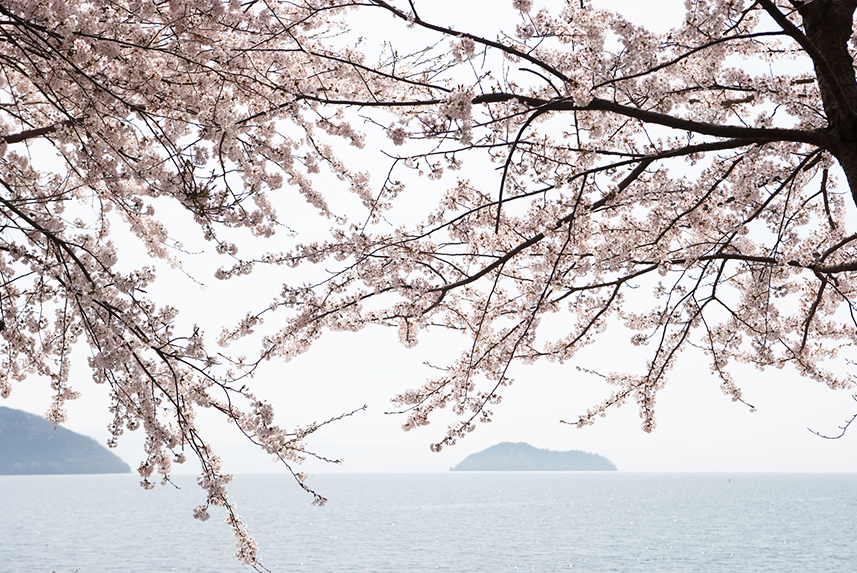
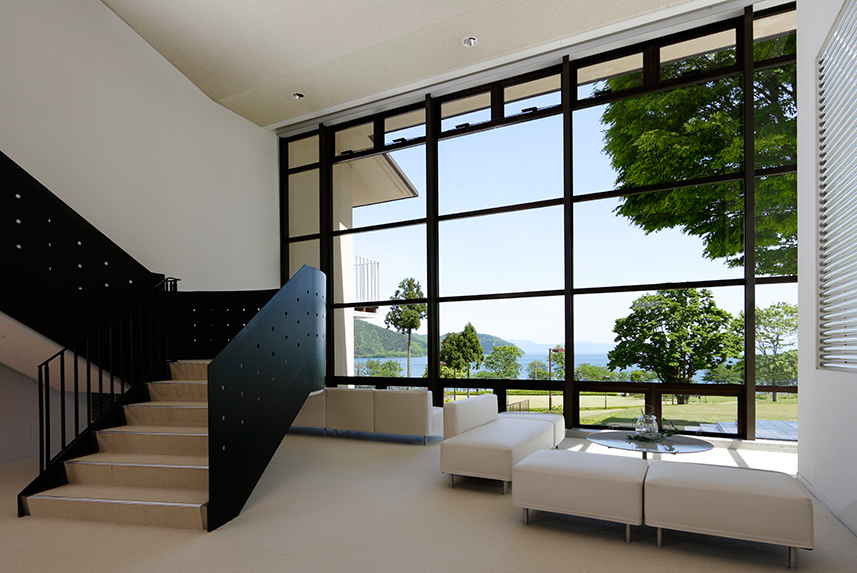
Lake Biwa, Japan's biggest lake, is a popular vacation spot for people from all over Japan. L'Hotel du Lac has its own beach out in front of the hotel, and tons of water sports such as boating, swimming and fishing are available.
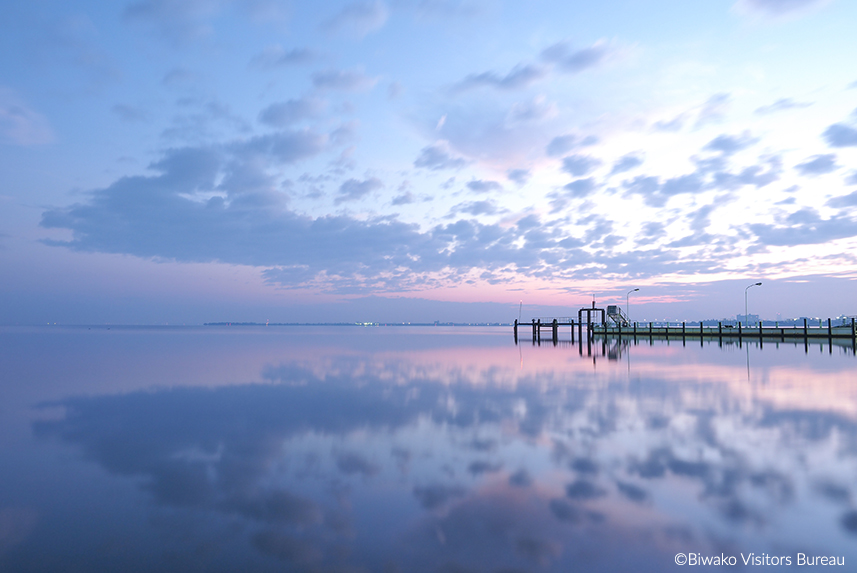
L'Hotel du Lac sits nestled on the shores of the lake, in the midst of a lush forest, waiting to welcome you to an expansive natural world with spectacular views of the lake and islands floating serenely in the distance. In spring, the lakeshore boulevard that passes in front of the hotel is one of the most spectacular blossom-viewing places in Japan.
Wine and fine cuisine draw people here, too, L'Hotel du Lac has quickly gained a reputation as a premium dining destination, with an enviable wine cellar selected by award-winning sommelier Shinya Tasaki and exquisite French and French-Japanese fusion cuisine to match.
*This pick-up service should be booked in advance.
From Komatsu Airport: Travel to Komatsu station by bus for 15 minutes. Board a limited train Thunderbird/Shirasagi to Tsuruga station, then change to a local JR Hokuriku line train to Omishiotsu station, a journey that takes 2 hours and 10 minutes in total. A pick-up service is available from there.
From Chubu Centrair International airport: Travel to Nagoya station on the Meitetsu μ-SKY Limited Express for 28 minutes. At JR Nagoya station, board a Shinkansen bullet train to Maibara station, then change to the local JR Hokuriku line to Omishiotsu station. This takes 2 hours and 15 minutes in total.
Check in at L’Hotel du Lac.


Lake Biwa, Japan's biggest lake, is a popular vacation spot for people from all over Japan. L'Hotel du Lac has its own beach out in front of the hotel, and tons of water sports such as boating, swimming and fishing are available.

L'Hotel du Lac sits nestled on the shores of the lake, in the midst of a lush forest, waiting to welcome you to an expansive natural world with spectacular views of the lake and islands floating serenely in the distance. In spring, the lakeshore boulevard that passes in front of the hotel is one of the most spectacular blossom-viewing places in Japan.
Wine and fine cuisine draw people here, too, L'Hotel du Lac has quickly gained a reputation as a premium dining destination, with an enviable wine cellar selected by award-winning sommelier Shinya Tasaki and exquisite French and French-Japanese fusion cuisine to match.
- Day 2
- Lake Biwa
Today you can join your guide for a full-day tour by private car.
Your first stop will be the Sagawa Art Museum. This superb museum showcases art and other cultural pursuits by Japanese artists, and is a great place to see the best of Japanese art. The striking buildings include a beautiful Water Garden, as well as a lovely tea house and an excellent gift shop.
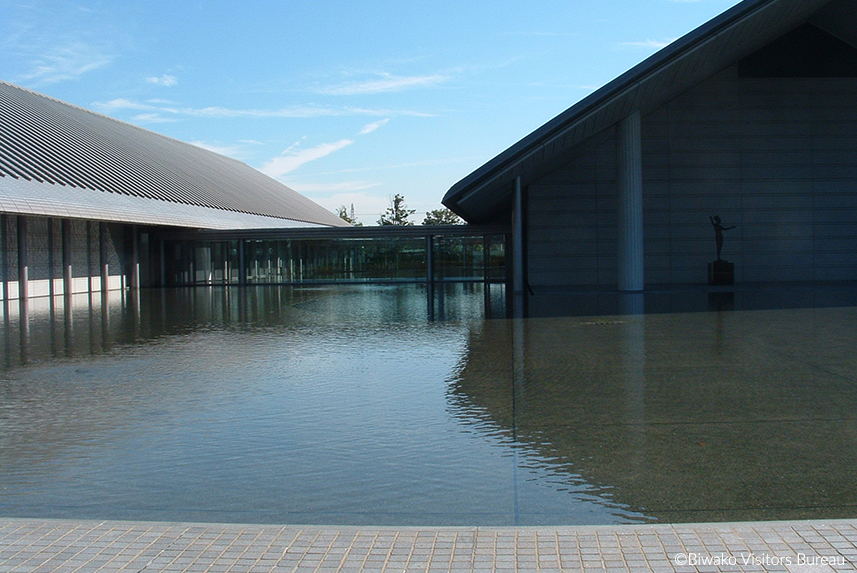
The next stop is the Miho Museum. This is an great place to acquaint yourself with the art of Asia, from ancient times to the present. The museum's exhibits consist of works from ancient civilizations including the Egyptians, Romans and various Asian cultures, with most of the works coming from the private collection of the museum’s founder, Mihoko Koyama, one of the richest women in Japan.
For a midday break, take a lunch cruise on Lake Biwa. Enjoy the beautiful scenery as you dine on delicious food. After lunch (or before), you can stroll the decks of the Michigan, a marvelous replica of a 19th century American paddle-wheeler.
In the afternoon, stop at Omi Hachiman. Located beside the ancient highway that ran from Kyoto to Edo (now Tokyo), Omi Hachiman thrived as a castle town and merchant center starting in the 16th century. You can wander the old town and view the white-walled storehouses (kura) and elegant 19th-century homes.
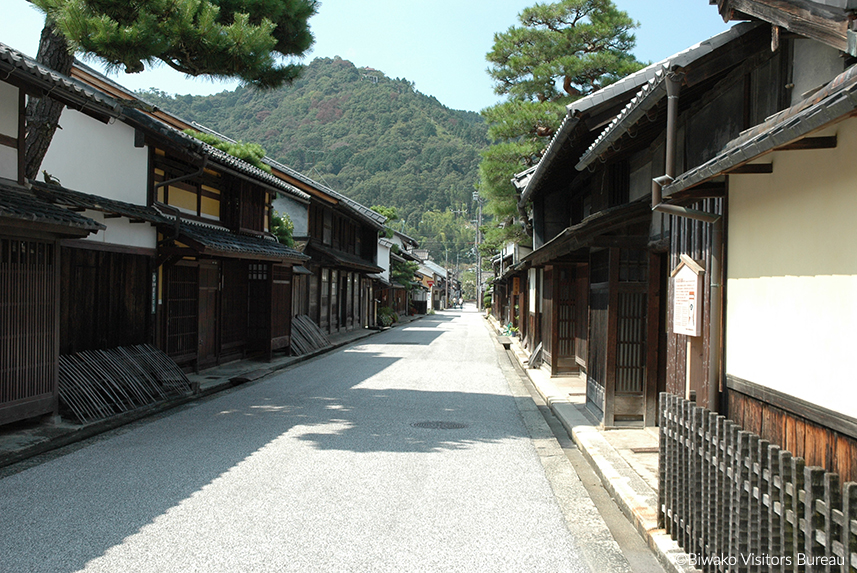
Stroll Shinmachi-dori, a beautiful old street designated by the government as an Important Preservation District for Groups of Historic Buildings. You can admire the district’s old houses, which were once the homes of wealthy merchants.
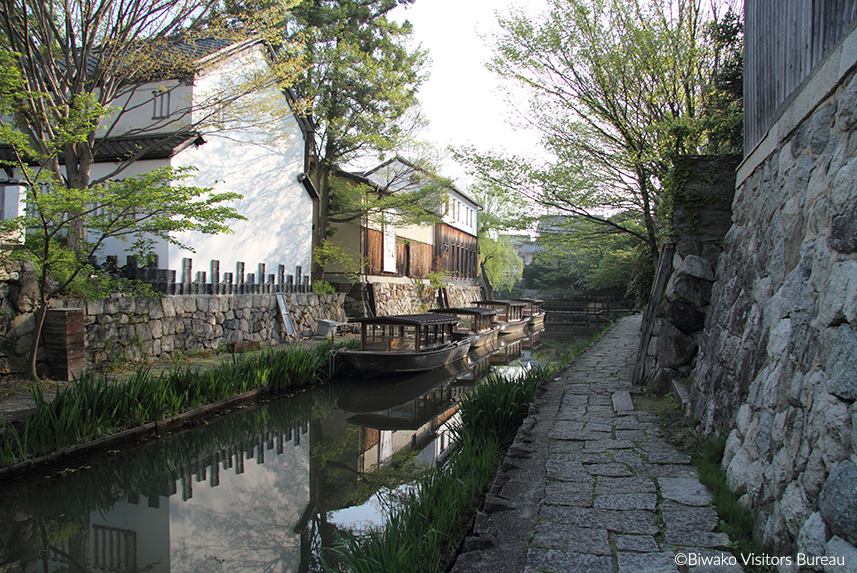
Continue your tour past the beautiful Hachimanbori canal. Originally the moat surrounding the castle, the canal later served as a transport route for boats from Lake Biwa. Walking along the banks of the canal and feeling its ancient atmosphere is like a trip through time.
The Kawara Museum (Roof Tile Museum) is one of the most interesting museums in this town. This small private museum is owned by a company that makes kawara roof tiles, the architectural element that gives old Japanese buildings their distinctive look. You can marvel at the variety and beauty of these tiles, and you can experience for yourself kawara-making here.
Several historical buildings have been converted into museums and galleries. The Borderless Art Gallery NO-MA, once a merchant’s house and warehouse, was renovated and found new life as an art gallery. The exhibits include all sorts of art, especially works created by disabled people.
If time permits, you could go for a ride on the Hachimanyama Ropeway and admire the breathtaking panoramic views.
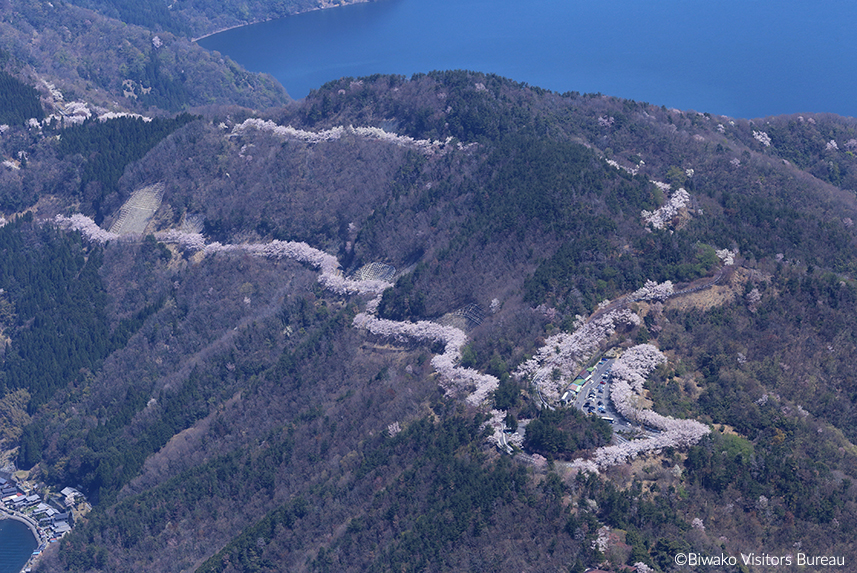
In addition to these attractions, there are dozens of historical sites to visit nearby, including ancient castles and battlegrounds. The nearby Oku-Biwako Parkway is beautiful at any time of the year, and the pretty Chikubu Island, visible from the hotel, is reachable by ferry from Imazu Port.
In the late afternoon, return to the L’Hotel du Lac.
Your first stop will be the Sagawa Art Museum. This superb museum showcases art and other cultural pursuits by Japanese artists, and is a great place to see the best of Japanese art. The striking buildings include a beautiful Water Garden, as well as a lovely tea house and an excellent gift shop.

The next stop is the Miho Museum. This is an great place to acquaint yourself with the art of Asia, from ancient times to the present. The museum's exhibits consist of works from ancient civilizations including the Egyptians, Romans and various Asian cultures, with most of the works coming from the private collection of the museum’s founder, Mihoko Koyama, one of the richest women in Japan.
For a midday break, take a lunch cruise on Lake Biwa. Enjoy the beautiful scenery as you dine on delicious food. After lunch (or before), you can stroll the decks of the Michigan, a marvelous replica of a 19th century American paddle-wheeler.
In the afternoon, stop at Omi Hachiman. Located beside the ancient highway that ran from Kyoto to Edo (now Tokyo), Omi Hachiman thrived as a castle town and merchant center starting in the 16th century. You can wander the old town and view the white-walled storehouses (kura) and elegant 19th-century homes.

Stroll Shinmachi-dori, a beautiful old street designated by the government as an Important Preservation District for Groups of Historic Buildings. You can admire the district’s old houses, which were once the homes of wealthy merchants.

Continue your tour past the beautiful Hachimanbori canal. Originally the moat surrounding the castle, the canal later served as a transport route for boats from Lake Biwa. Walking along the banks of the canal and feeling its ancient atmosphere is like a trip through time.
The Kawara Museum (Roof Tile Museum) is one of the most interesting museums in this town. This small private museum is owned by a company that makes kawara roof tiles, the architectural element that gives old Japanese buildings their distinctive look. You can marvel at the variety and beauty of these tiles, and you can experience for yourself kawara-making here.
Several historical buildings have been converted into museums and galleries. The Borderless Art Gallery NO-MA, once a merchant’s house and warehouse, was renovated and found new life as an art gallery. The exhibits include all sorts of art, especially works created by disabled people.
If time permits, you could go for a ride on the Hachimanyama Ropeway and admire the breathtaking panoramic views.

In addition to these attractions, there are dozens of historical sites to visit nearby, including ancient castles and battlegrounds. The nearby Oku-Biwako Parkway is beautiful at any time of the year, and the pretty Chikubu Island, visible from the hotel, is reachable by ferry from Imazu Port.
In the late afternoon, return to the L’Hotel du Lac.
- Day 3
- Lake Biwa
Today, you can relax in your room or join one of the half-day programs.
Boat trip to Chikubujima island: It is known as the "Island of the Gods." It is the 30th stop on the classic 33 Temple Pilgrimage route of the western part of the country, and is home to Hogonji Temple and Tsukubusuma shrine. The island itself is only 2 km in circumference and it has high granite cliffs covered in bamboo, cedar and pine. It boasts one of the "Eight Great Views" of Lake Biwa. The island can be reached by boat, and the nearest docks from L'Hotel du Lac are at Imazu (30 minutes by car) and Nagahama (50 minutes by car).
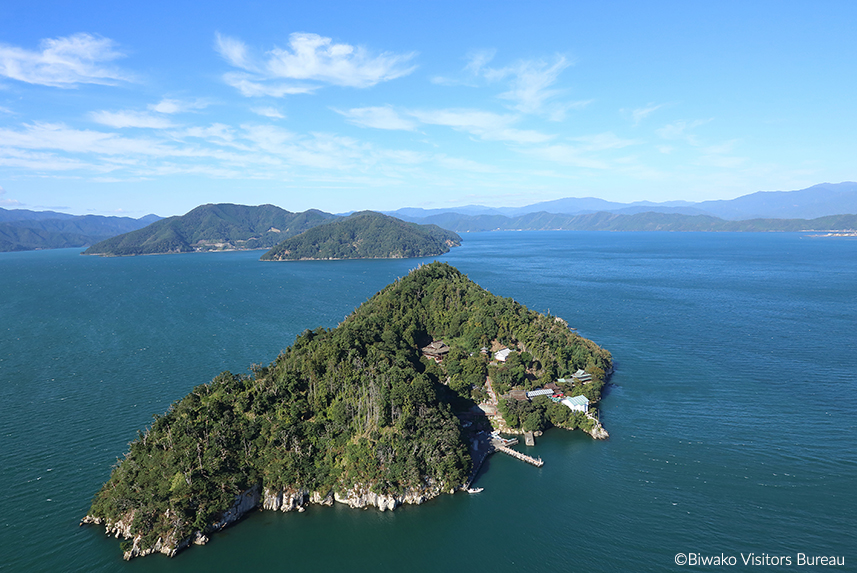
Special visit to the Silk Village: You will have a chance to see silk making in the traditional manner. The production process is very delicate and is done entirely by hand. The process includes many steps, and usually the workers train for 7-8 years to be able to work independently. The number of skilled workers has been decreasing year after year due to the lack of successors. The silk thread from this village has been used for many musical instruments, such as shamisen, traditional Japanese three-stringed instrument. You can also visit Ikagu shrine, where the tradition of silk making in this village started.
Drive the scenic "Okubiwako Parkway” to view cherry blossoms: This parkway is famous for its cherry blossoms. Along the 18.8 km route, you can find (in season) some 4,000 sakura trees in bloom – a spectacular sight.
"O-hanami” cherry blossom-viewing boat cruise: "O-hanami” means "blossom-viewing,” and the Japanese love to have o-hanami parties to welcome the spring. Enjoy the gorgeous scenery of cherry blossoms blooming from a boat on Lake Biwa.
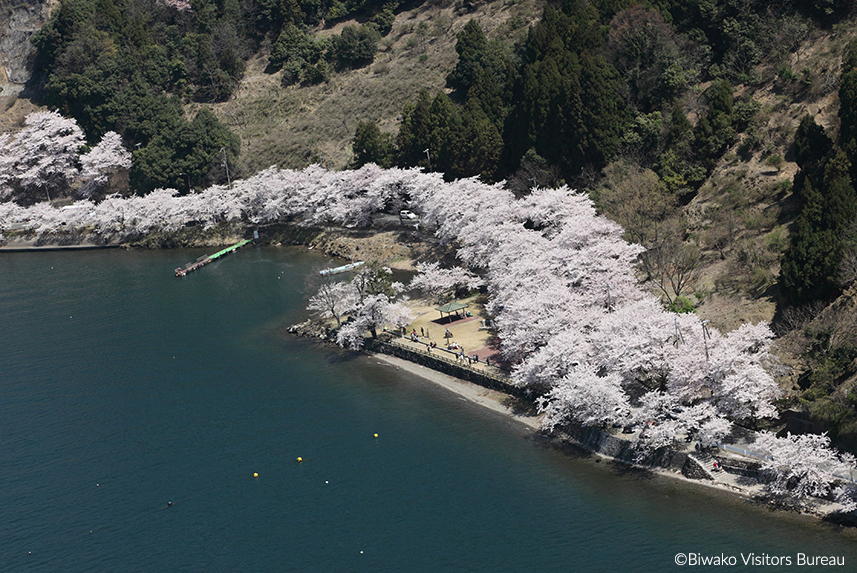
In the afternoon, return to the L’Hotel du Lac.
Boat trip to Chikubujima island: It is known as the "Island of the Gods." It is the 30th stop on the classic 33 Temple Pilgrimage route of the western part of the country, and is home to Hogonji Temple and Tsukubusuma shrine. The island itself is only 2 km in circumference and it has high granite cliffs covered in bamboo, cedar and pine. It boasts one of the "Eight Great Views" of Lake Biwa. The island can be reached by boat, and the nearest docks from L'Hotel du Lac are at Imazu (30 minutes by car) and Nagahama (50 minutes by car).

Special visit to the Silk Village: You will have a chance to see silk making in the traditional manner. The production process is very delicate and is done entirely by hand. The process includes many steps, and usually the workers train for 7-8 years to be able to work independently. The number of skilled workers has been decreasing year after year due to the lack of successors. The silk thread from this village has been used for many musical instruments, such as shamisen, traditional Japanese three-stringed instrument. You can also visit Ikagu shrine, where the tradition of silk making in this village started.
Drive the scenic "Okubiwako Parkway” to view cherry blossoms: This parkway is famous for its cherry blossoms. Along the 18.8 km route, you can find (in season) some 4,000 sakura trees in bloom – a spectacular sight.
"O-hanami” cherry blossom-viewing boat cruise: "O-hanami” means "blossom-viewing,” and the Japanese love to have o-hanami parties to welcome the spring. Enjoy the gorgeous scenery of cherry blossoms blooming from a boat on Lake Biwa.

In the afternoon, return to the L’Hotel du Lac.
- Day 4
- Departure
Check out from L’Hotel du Lac and transfer to Nagahara or Omishiotsu station.



